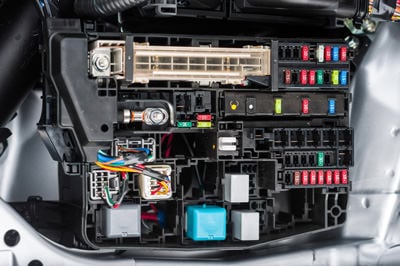Comprehensive technical support for electrical industry solutions.
Wiki Article
Top Tips for Effective Electric System Troubleshooting
Troubleshooting electrical systems calls for a systematic technique, grounded in a thorough understanding of electrical concepts and safety protocols. The nuances of reliable fixing prolong past mere technical knowledge; comprehending exactly how to document findings and focus on security can dramatically affect end results.Understand the Essentials
Comprehending the fundamentals of electric systems is necessary for effective troubleshooting, as a strong structure permits professionals to identify and fix issues more successfully. An extensive grasp of electric principles, such as voltage, current, resistance, and power, is vital in identifying the origin of troubles. Voltage is the electrical possible difference that drives current via a circuit, while resistance opposes the flow of present, impacting the general performance of the system.Knowledge with circuit parts, including resistors, capacitors, diodes, and changes, is additionally critical. Each component plays an unique duty in circuit habits and can affect performance when malfunctioning. Furthermore, recognizing series and identical circuit setups is vital, as these plans influence the circulation of voltage and present within the system.
Professionals need to be conscious of possible risks, such as shock and short circuits, to carry out safe troubleshooting techniques. By grasping these foundational principles, professionals improve their ability to perform effective diagnostics and fixings, inevitably leading to boosted efficiency and reliability of electrical systems (electrical system troubleshooting).
Gather Necessary Devices
Effective troubleshooting of electric systems needs the right set of tools to identify and settle problems accurately. Vital tools consist of a multimeter, which gauges voltage, present, and resistance, enabling for exact evaluations of electric elements.Additionally, protected hand devices such as screwdrivers, pliers, and cable strippers are crucial for securely manipulating electric links. It is likewise advisable to have a circuit tester accessible to confirm the existence of voltage in outlets and cables. For more complicated systems, a thermal imaging video camera can assist identify overheating elements, suggesting potential failures.

Follow a Systematic Method
Having collected the proper devices, the next action in troubleshooting electrical systems is to adhere to an organized method. A systematic strategy guarantees that technicians can determine faults effectively and accurately, decreasing downtime and preventing unneeded repairs.Begin by reviewing the system's schematic representations and requirements. Understanding the design and operational parameters will certainly provide context for identifying concerns. Next, isolate the problem area by using a procedure of removal. This entails monitoring each component systematically, starting from the source of power and working in the direction of the lots.
Utilize screening tools, such as multimeters and oscilloscopes, to gather objective data regarding voltage, present, and resistance at different points within the system. This empirical proof will certainly direct your troubleshooting initiatives and assist to validate or remove possible reasons of failure.
Additionally, think about environmental factors that may affect the system's efficiency, such as temperature level changes or dampness access. An extensive evaluation of circuitry, links, and elements will certainly make certain that all opportunities are made up.
Record Your Findings
Complete documentation is essential in the fixing procedure of electric systems. Accurate documents improve the performance of determining recurring concerns and promote communication amongst staff member. Each searching for must be thoroughly noted, including symptoms observed, examinations performed, and the end results of those tests. electrical system troubleshooting. This technique not just aids in recognizing the source of the trouble however likewise acts as a recommendation for future fixing initiatives.
Furthermore, maintaining a log of components replaced or repair work done is indispensable. This info sustains inventory management and can help examine the long life and dependability of particular parts.
Ultimately, the documents process ought to be comprehensive yet concise, enabling easy access and evaluation - electrical system troubleshooting. By prioritizing in-depth paperwork, professionals can develop a beneficial data base that not just aids in existing troubleshooting yet additionally encourages future upkeep efforts, consequently boosting overall system reliability

Prioritize Security Steps
Acknowledging the inherent risks connected with electric systems is important for guaranteeing safety during troubleshooting. Electrical shock, burns, and devices damages are just a few of the prospective hazards that technicians encounter. Focusing on precaution is not just a legal obligation yet additionally a moral imperative that safeguards both the professional and the surrounding environment.Before beginning any kind of troubleshooting task, specialists ought to put on proper individual protective equipment (PPE), including shielded handwear covers, security glasses, and flame-resistant clothing. Making sure that the workspace is completely dry and complimentary of clutter can significantly lower the danger of crashes. It is crucial to de-energize circuits prior to starting any kind of job, validating that they are not live via the usage of a multimeter or voltage tester.
Establishing clear interaction procedures with group members is additionally vital; this ensures that everyone is conscious of potential threats and the status of the electric system being worked on. Last but not least, having an emergency action strategy in area can confirm vital in the occasion of a case. By focusing on precaution, professionals can successfully mitigate risks and foster a more secure office.
Verdict
Efficient technical support for electrical industry electrical system troubleshooting counts on a detailed understanding of fundamental concepts and a systematic approach. By gathering necessary devices, adhering to organized examination strategies, and thoroughly recording findings, the repairing process becomes much more reliable and reliable. Focusing on precaution ensures the wellness of individuals involved and the honesty of the electrical system. Carrying out these methods will certainly enhance the fixing experience, bring about quicker resolutions and boosted operational efficiency in electric systems.Report this wiki page